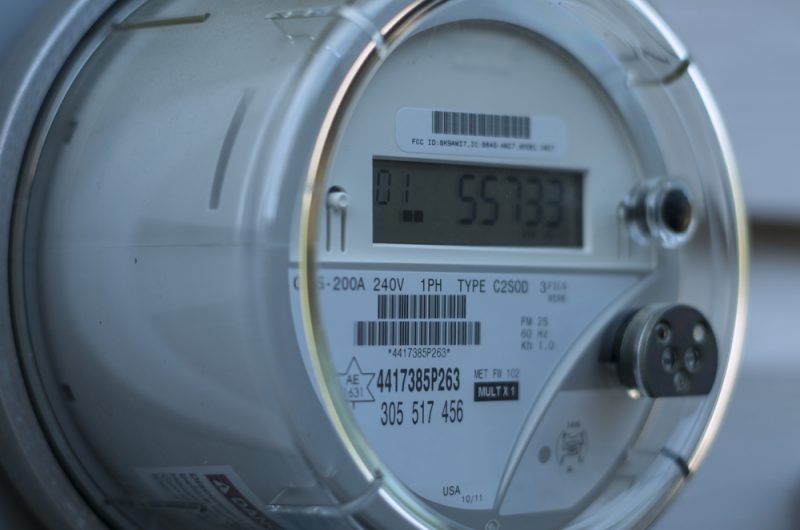FERC says advanced meters account for about 50 pct of all meters across U.S.

Smart meters are becoming increasingly prevalent in all areas of the country, according to a new report from the Federal Energy Regulatory Commission that assesses demand response and advanced metering.
FERC cited Energy Information Administration (EIA) data that found out of the 151.3 million total meters that were operational across the country in 2016, 70.8 million or 46.8 percent were advanced meters.
In four of the eight North American Electric Reliability Corporation (NERC) regions, smart meters make up more than 50 percent of all meters, including around 86 percent of meters in the Texas Reliability Entity (Texas RE), 60 percent in the Western Electricity Coordinating Council (WECC), and around 58 percent in both the Southwest Power Pool Regional Entity (SPP RE) and in the Florida Reliability Coordinating Council (FRCC). Alaska showed the most growth, with a 17 percent increase in smart meters between 2015 and 2016.
“Advanced meter penetration increased in all regions from 2015 to 2016,” the report said. “Advanced meters are slightly more common among residential and commercial sectors compared to the industrial sector. In 2016, advanced meters accounted for approximately 47 percent of all residential meters, 45 percent of all commercial meters, and 41 percent of all industrial meters.”
Over the past year, electric utilities in Florida, Mississippi, Rhode Island, Virginia and other states either proposed or received approval for large-scale deployment of advanced meters, sometimes as part of grid modernization efforts, the report noted.
For example, in April the Mississippi Public Service Commission approved a Mississippi Power Company proposal to deploy about 193,000 advanced meters across 23 counties throughout its service territory at a cost of $39 million over the next two years. Elsewhere, Arizona has implemented a fee for customers who choose to voluntarily opt out of an advanced meter and instead receive a non-advanced meter.
Other states have been delaying implementation of smart meters, with regulators in Kentucky, for instance, taking a cautious approach to investments in advanced metering technology. Still, Louisville Gas & Electric Company (LG&E) and Kentucky Utilities Company (KU) have been encouraged by the Kentucky Public Service Commission to move forward with an advanced meter pilot program.
A survey by EIA also found that nearly 10 million customers were enrolled in incentive-based demand response programs in 2016, up 8.2 percent from 2015. Programs run by utilities increase additional enrollment with more than 2.5 million total customers enrolled in programs run by utilities Potomac Electric Power Company, Delmarva Power, DTE Electric Company and San Diego Gas & Electric Company.
The report also addresses the potential for demand response to be a “quantifiable, reliable resource for regional planning purposes.” According to FERC, NERC’s Demand Response Availability Data System (DADS) has been measuring specific events and its need for demand response for years. FERC cited a NERC’s “State of Reliability” report, which found that demand response resource deployment increased during extreme weather events like 2014’s Polar Vortex, and heat conditions on the East Coast in 2013 and West Coast in 2015.
FERC’s report also looked at average savings achieved. Total potential peak demand savings from retail demand response programs increased by approximately 9 percent, or nearly 3,050 megawatts (MW) between 2015 and 2016.
The report found that one of the main barriers to customer participation in demand response programs is slow implementation of time-based rate programs. “Customer enrollment in time-based rate programs increased by approximately 5 percent in 2016. While customer participation in time-based rate programs has increased every year since 2013, only eight million customers are participating in such programs — a relatively small amount.”
Meanwhile, customer awareness of advanced metering is growing, with 70 percent of U.S. consumers having heard of the technology. Two-thirds of consumers are also interested in receiving the data provided by advanced meters. Fifty-nine percent of respondents also said they are “probably interested” or “definitely interested” in incentive-based programs.
The report is FERC’s 13th annual report on demand response and advanced metering since the Energy Policy Act of 2005, which is designed to look at the requirements, barriers, and existing programs that are out there, among other things. While the report found that roughly 50 percent of all meters in the United States are now advanced meters, it also noted a number of states and utilities will promote massive growth of advanced metering in the next few years.
